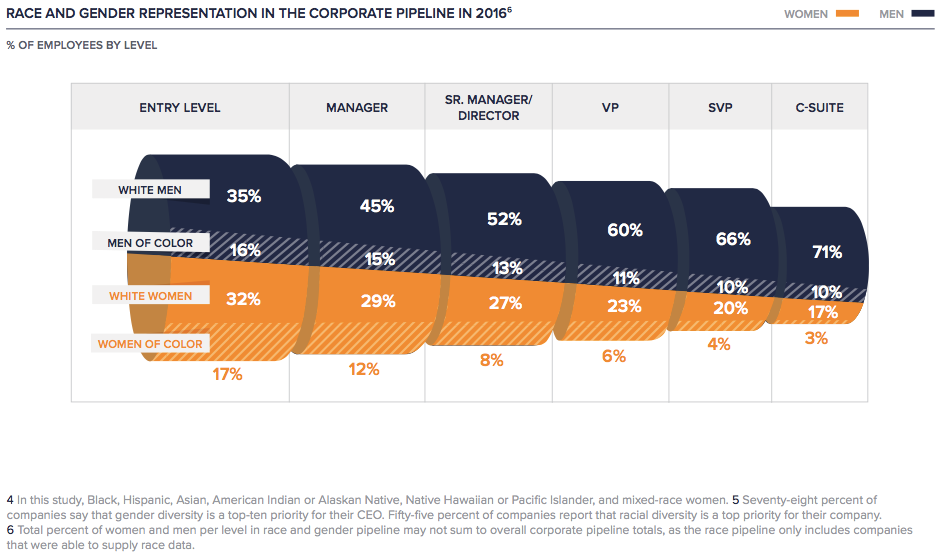Women in leadership is not a modern phenomenon.
Cleopatra VII ruled the Egypt, Cyprus and modern-day Libya from 51 BC to 30 BC bringing peace and prosperity to her country bankrupt and divided from civil war. Joan of Arc led the French revolt against English occupation at Orleans in 1429. Queen Elizabeth I (1533-1603) reined in a time revered as the golden age of English history. Mirabai from India, Catherine de Medici from Italy, Catherine the Great from Russia grace history books with leadership roles hoisted by their nobility.
Women from humble means similarly paved the way for women’s rights in the 18th century: Mary Wollstonecraft’s “A Vindication of the Rights of Women”, Jane Austen’s novels as a pioneer-female author, and Sojourner Truth’s speech “Ain’t I a woman?” equating women to men while born a slave.
Susan B. Anthony, Emmeline Pankhurst, Marie Curie, Coco Chanel, Eleanor Roosevelt as well as many others accomplished great strides for future women while confronting a changing society from the Industrial Revolution and the conflict of war.
With all these groundbreaking achievements, how could our modern society still struggle with gender parity?
As gracefully stated in the Barriers and Bias report by the American Association of University Women (AAUW) on the status of women in leadership:
“Time will not solve the gender leadership gap; action will.”
(AAUW, 2016)
Female contribution to the workforce and to higher education has steeply risen over the past 50 years (AAUW, 2016). Yet men continue to outnumber women in top leadership positions. In the past two decades more women graduate from university than men, nevertheless men are paid 16% more per hour of work (EC, 2015).
Women face multiple barriers from advancing up the corporate ranks. These include stereotypical perceptions of gender roles, lack of suitable mentors or role models, and the organization’s failure to implement gender diversity priorities.




Within large public corporations, female participation in board meetings remains significantly low at 22.7% in 2015. However this has risen from 11.9% in 2010 (EC, 2015). The spike can be accredited to government’s expansion of gender equality legislation and also the change within businesses to clearly define gender diversity targets. We can see this progress with the “Feminization Index” in France, starting in 2011, which requires company quotas for female representation at board level as well as in management positions.
Women in CEO positions are present in only 5% of the companies in the S&P 500 Index (AAUW, 2016). Yet according to a study by Crédit Suisse in 2012, companies with at least one woman on the board of directors have a higher return of investment. Catalyst’s 2007 report on S&P 500 companies also shows a strong correlation between a higher return on sales, invested capital and equity with women in top decision-making positions. Not only do women increase the bottom line, research shows that women’s participation in management correlates to positive performance outcomes for employees as well as corporate social responsibility in the community (EC, 2015).
Government also struggles with gender imparity. In the EU, women only account for 28.5% of members in the lower houses of national parliaments in 2015 (EC, 2015). Although women in politics has steadily grown over the past decade, the average annual growth lags to such a degree that it will take until 2051 for women to equally represent within EU national parliaments. For the United States, one in five members of congress are women, and only six states have female governors (AAUW, 2016). There has yet to be a female US president, as the world witnessed during the controversial 2016 Elections.


According to the World Economic Forum’s report Industry Gender Gap: Women and Work in the Fourth Industrial Revolution (2016), the following are approaches to closing the “gender gap”:
- Measurement and target setting
- Mentorship and training
- Awareness and accountability
- Work environment and work-life balance
- Leadership and company commitment
- Responsibility beyond the office
Society needs to alter its perception of culture, organizations and public policies in order to engage women in leadership positions. By empowering women today, the societal stigma that women are anything less than equal will dissipate with the next generation.
Équipe HEConomist
American Association of University Women, (2016). Barriers and Bias: the status of women in leadership. 1st ed. [ebook] Washington, DC: AAUW. Available at: http://www.aauw.org/research/barriers-and-bias/ [Accessed 13 Mar. 2017].
European Commission, (2016). Report on equality between women and men 2015. 1st ed. [ebook] Belgium: European Union. Available at: http://ec.europa.eu/justice/gender-equality/files/annual_reports/2016_annual_report_2015_web_en.pdf [Accessed 13 Mar. 2017].
McKinsey, (2016). Women in the Workplace: 2016. 1st ed. [ebook] McKinsey&Company. Available at: http://www.mckinsey.com/business-functions/organization/our-insights/women-in-the-workplace-2016 [Accessed 13 Mar. 2017].
World Bank, (2015). Women, business and the law 2016. 1st ed. Washington (DC): World Bank.
World Economic Forum, (2016). The Industry Gender Gap Women and Work in the Fourth Industrial Revolution. 1st ed. [ebook] Genève: World Economic Forum. Available at: http://www3.weforum.org/docs/WEF_FOJ_Executive_Summary_GenderGap.pdf [Accessed 13 Mar. 2017].
Image : http://www.morganmckinley.com.cn/en/article/women-leadership

